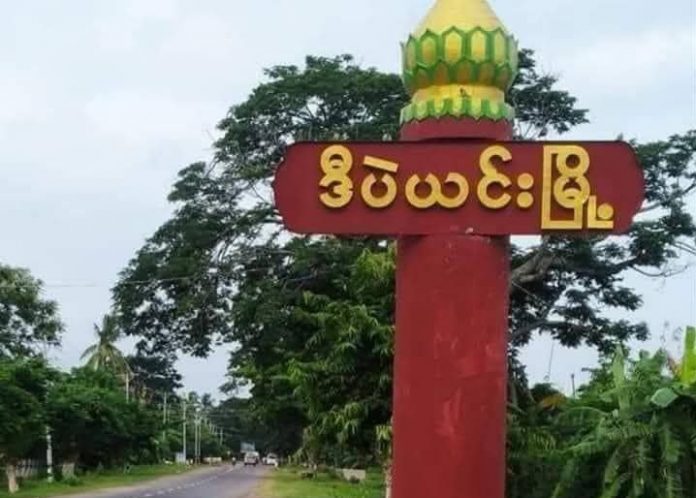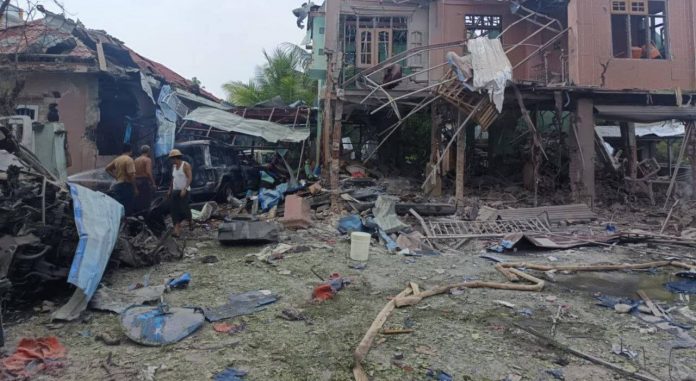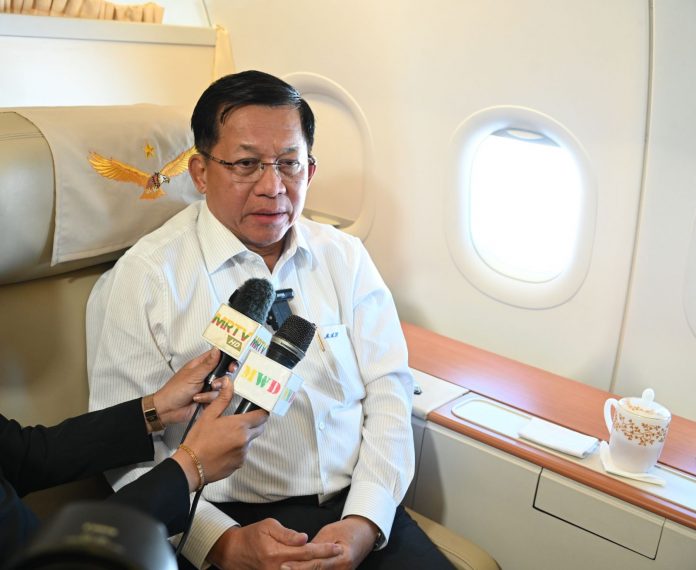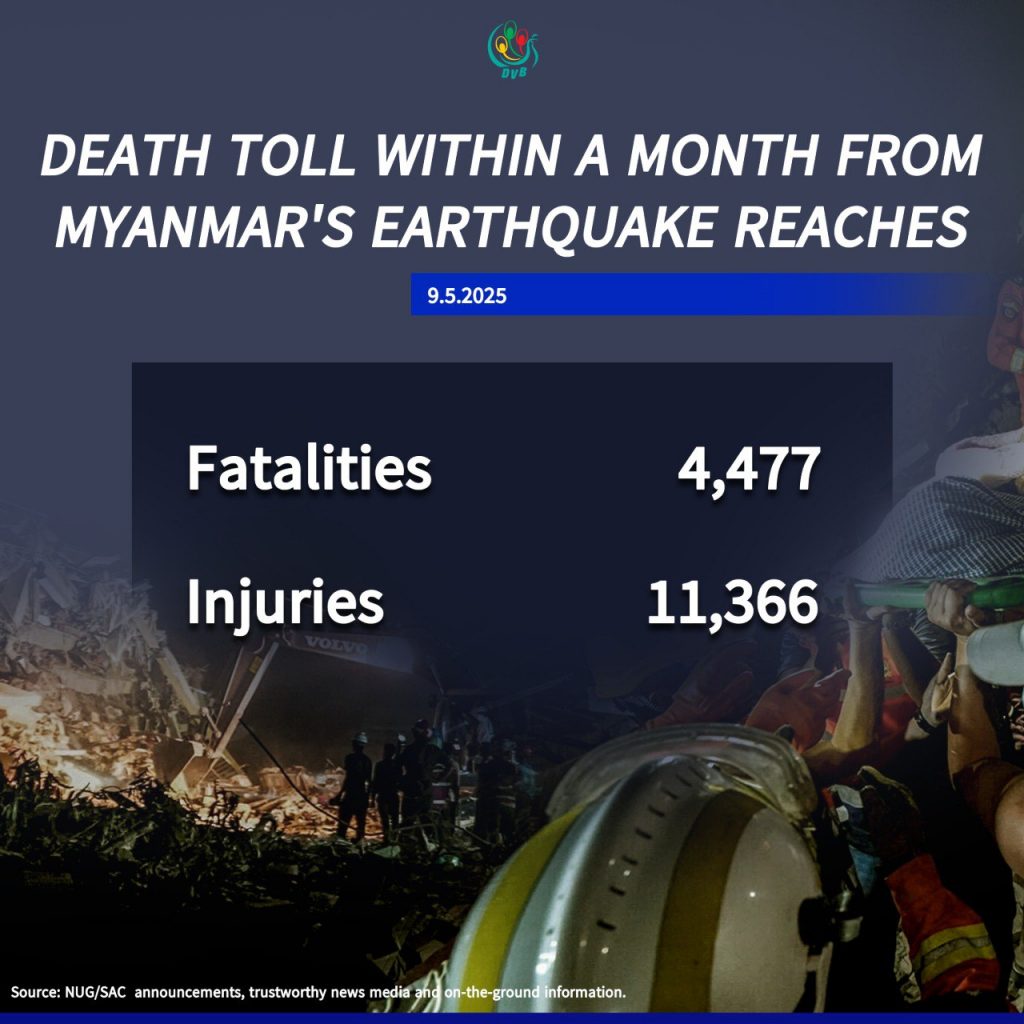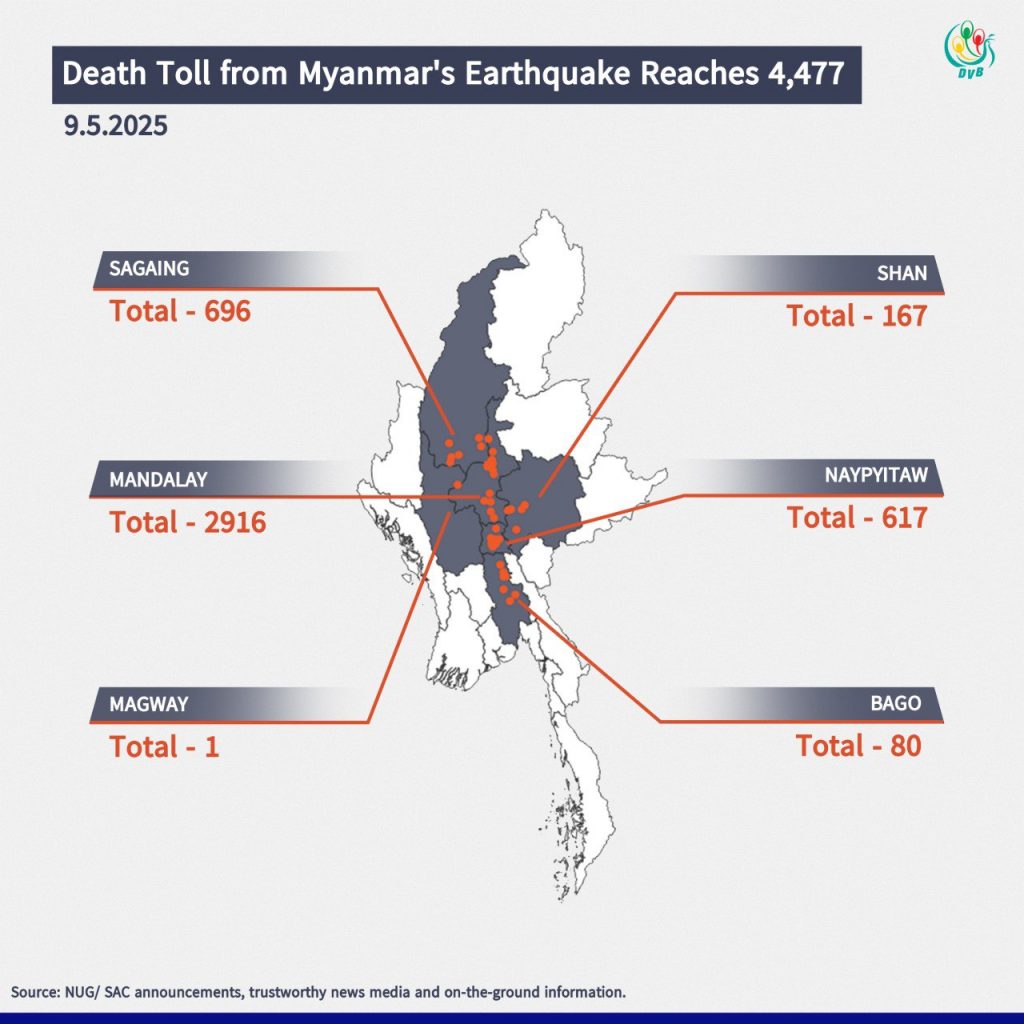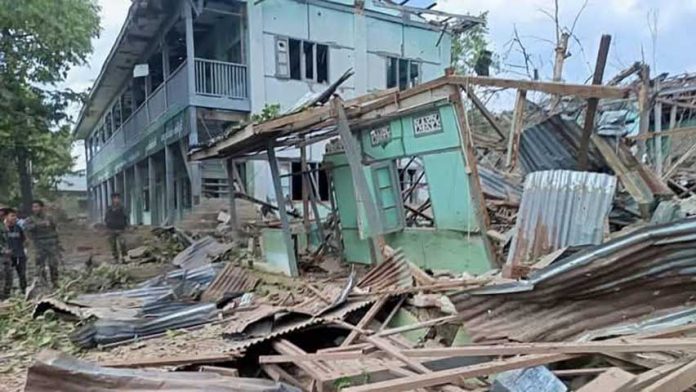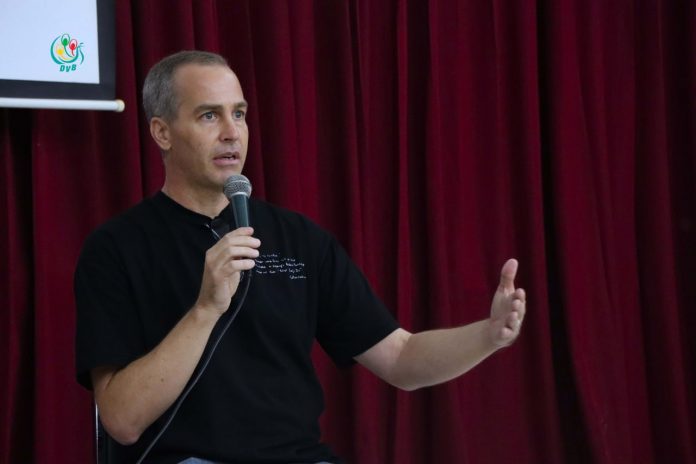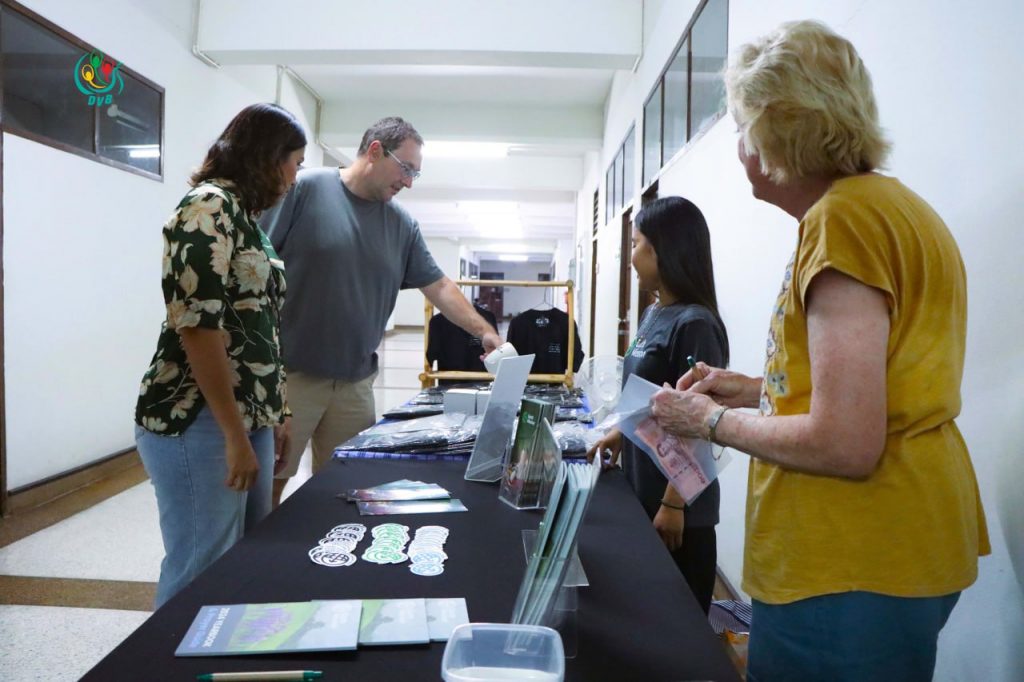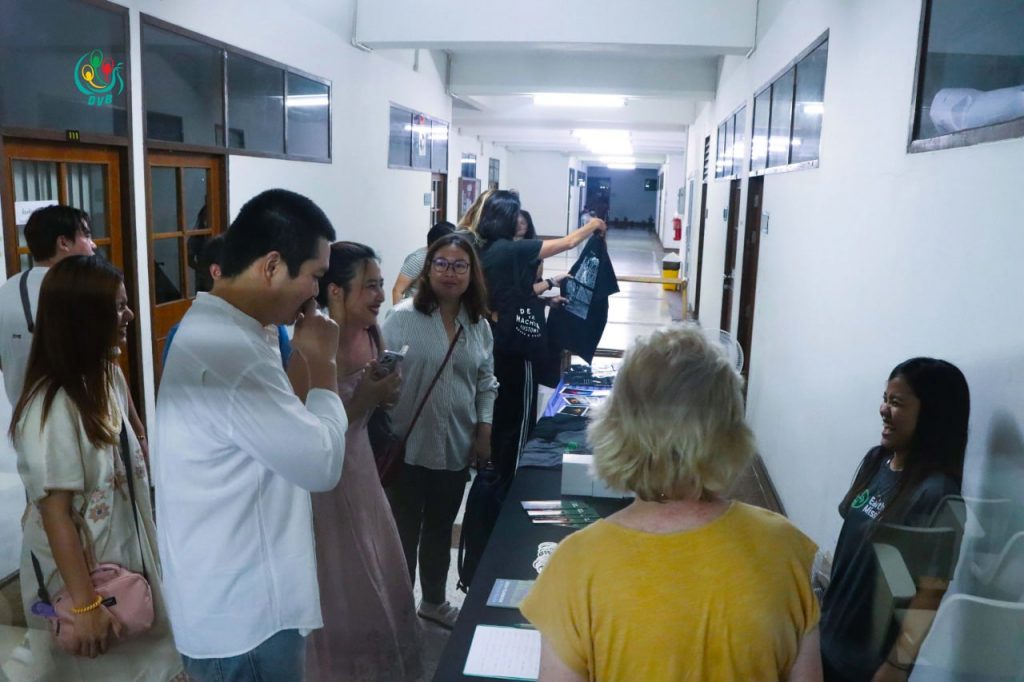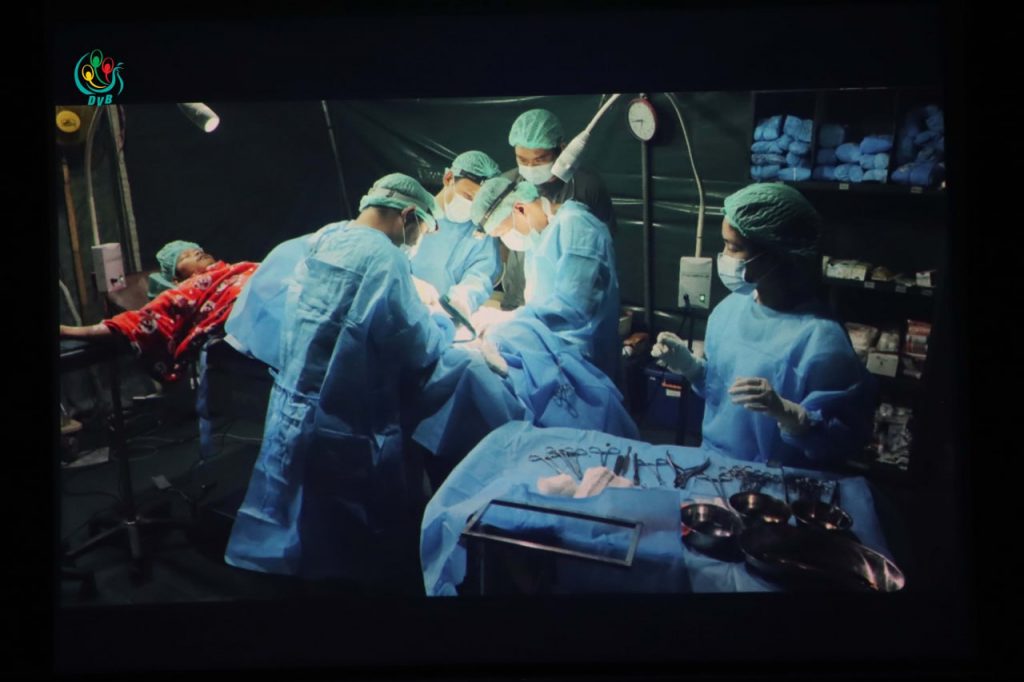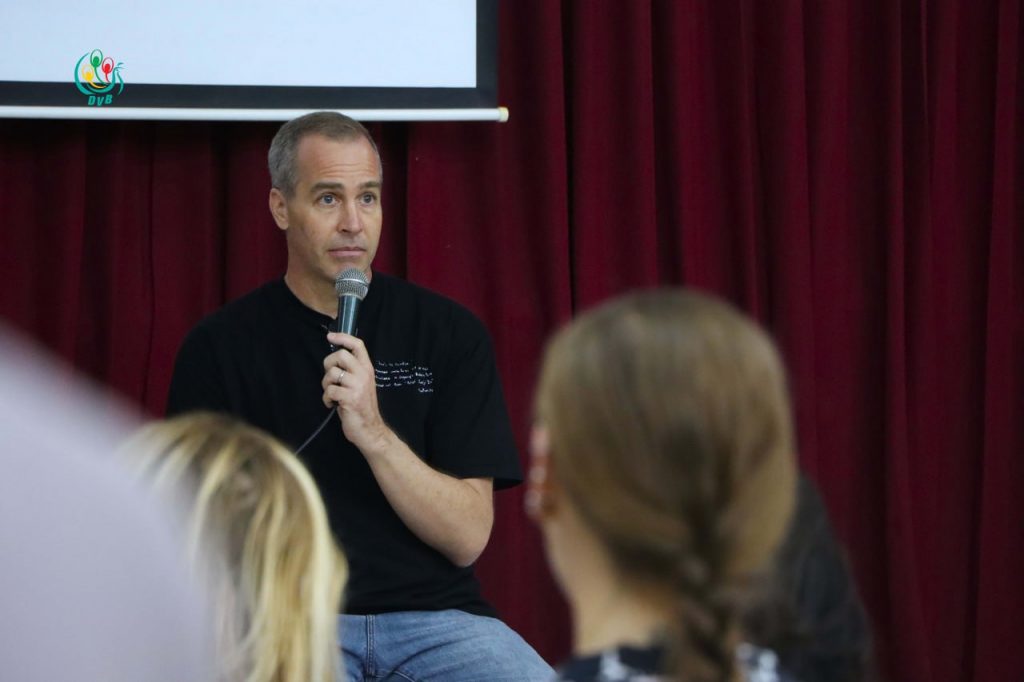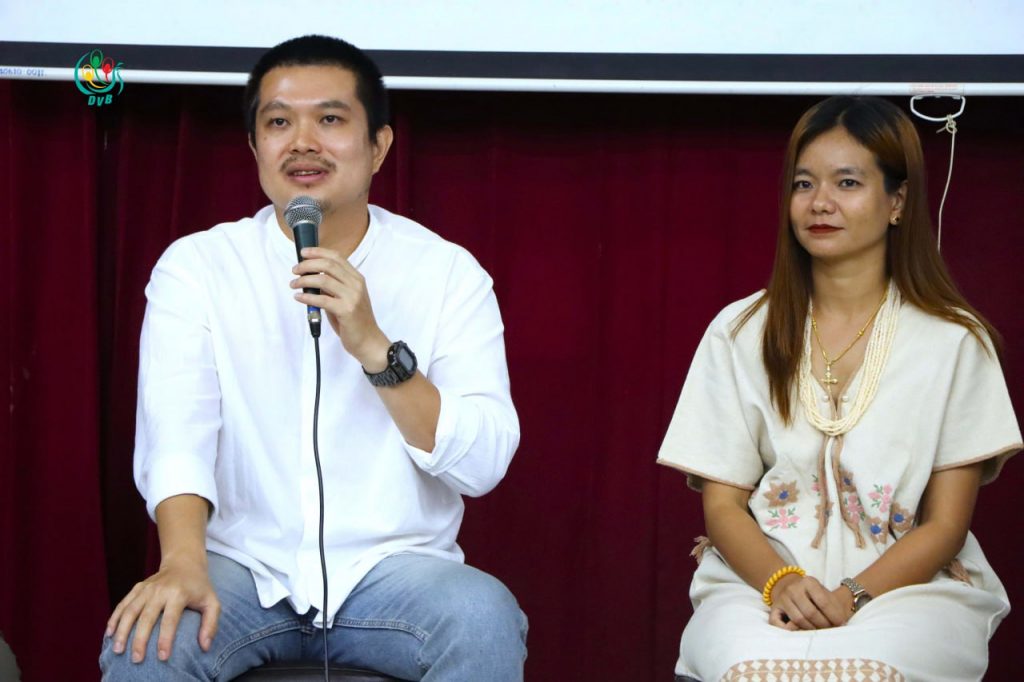Guest contributor
Noor Azizah
The Rohingya genocide, a brutal campaign that has spanned over 83 years, has led to widespread displacement and persecution of the Rohingya people.
Fleeing to neighboring countries like Bangladesh, Malaysia, Indonesia, Thailand, India, Pakistan, and Saudi Arabia, the Rohingya are desperately trying to escape a history of violence.
Unfortunately, for Rohingya women, this violence does not end when they flee Burma as sexual violence continues unabated.
The Burmese military junta and other actors have weaponized rape and gender-based violence against Rohingya women as part of a calculated strategy of destruction.
These women embark on dangerous sea journeys, primarily across the Andaman Sea, seeking safety and a better life—not for themselves, but for their children.
The U.N. High Commissioner for Refugees (UNHCR) has reported an 80 percent increase in dangerous sea journeys by Rohingya women toward Malaysia and Indonesia over the past year.
Tragically, more than 650 of them have disappeared, presumed drowned, during these perilous journeys.
From the junta to the Arakan Army
Despite the hope of escaping genocide, the women who survive the journey face further sexual violence.
The atrocities committed during the 2017 military crackdown on the Rohingya has been described as a “textbook example of ethnic cleansing” by the U.N. due to its genocidal nature, with rape and sexual violence used as tools to erase the community’s future.
The U.N. has documented that around 25,000 Rohingya women were subjected to rape, with thousands becoming pregnant, underscoring the scale of the violence and its devastating consequences.
This widespread violence did not stop at the borders of Burma; it followed these women into refugee camps and cities across South and Southeast Asia.
Médecins Sans Frontières (MSF), or Doctors without Borders, reported that 1,300 babies were born to women who were raped, underscoring the enduring trauma and the long-lasting impact of this violence.
Rape, according to the U.N. Human Rights Council (UNHRC) in 2019, has been used as a tool not only of physical harm but also to degrade and dehumanize Rohingya women, eroding their dignity and autonomy.
Survivors of sexual violence face deep stigmatization and marginalization. As Amnesty International noted in 2018, survivors are often excluded from their communities, further weakening the cultural fabric of the Rohingya people.
This calculated sexual violence is part of a broader strategy by the junta to dismantle the very structure of Rohingya society, targeting its most vulnerable members—its women and children.
More recently in 2024, in addition to the military, the Arakan Army (AA), led by the majority Rakhine ethnic group in Arakan State, has joined in committing sexual violence against Rohingya women.
One survivor described the brutality she endured in an August attack, stating that after her door was forcibly opened, troops from the AA assaulted her in front of her family and then slaughtered her father-in-law and two brothers-in-law before dragging them from their home.
Rohingya refugees targeted in Indonesia
In 2024, yet another horrific instance of sexual violence against Rohingya refugees was reported when a boat carrying 140 people fleeing persecution capsized off the coast of Indonesia.
Sixty-seven lives were lost in this tragedy. While the exact cause of the capsizing remains unclear, reports indicate that the Indonesian captain—himself a human trafficker—systematically raped and assaulted passengers before deliberately sinking the vessel.
Among the few survivors was a 12-year-old girl who recounted the horrors she endured. She was repeatedly raped and abused by the captain and his crew.
“If you don’t come to us,” the captain had threatened, “we will capsize this boat!” she recalled in an interview. Having already survived violence in Burma, she now faced another cycle of unimaginable brutality in her desperate attempt to escape.
Six women who were raped by the same captain arrived in Aceh Province, pregnant. My team at Rohingya Maiyafuinor Collaborative Network (RMCN) and I were the first responders, providing them with gender-sensitive care.
This year, they have given birth, and we continue to support them as they navigate their journey toward healing.
Rohingya women face Gender-Based Violence in Malaysia
In Malaysia’s immigration detention centers, Rohingya women are subjected to unimaginable abuse, their dignity, humanity, and will to survive systematically stripped away.
Confined to overcrowded and filthy cells, they endure relentless brutality from officers who regard them as disposable and unwanted.
Laila, a Rohingya asylum seeker, finds herself trapped in an unending nightmare. If deported to Myanmar, she faces persecution; if she stays in Malaysia, she is condemned to indefinite detention under the country’s harsh immigration laws.
Women detainees are particularly vulnerable, routinely subjected to verbal and physical abuse by officers who remind them, “Who gave you permission to come here? This is not your country. We did not ask you to come here.”
They live in constant fear, knowing that any sign of defiance—even something as simple as a request for food or hygiene items—can lead to severe punishment.
Former detainees describe nights spent on cold, hard floors, shivering in thin prison uniforms, their bodies battered by the officers’ violence. Many report being kicked, slapped, or whipped with belts.
Others recount being forced into painful stress positions, ordered to hang from the wall “like geckos,” or made to do hundreds of squats and push-ups until their muscles give out.
“We were beaten for the smallest things,” says Ali, a Rohingya refugee who spent months in Belantik Immigration Detention Center in northern Malaysia’s Kedah State.
“If we asked for more food, took an extra mug of water to shower, or requested a blanket to survive the cold, we were hit. I saw women collapse from exhaustion, but no one cared.”
The violence extends to children as well. Ali recalls witnessing a nine-year-old boy being savagely beaten by officers after asking for an extra piece of bread.
When Ali pleaded for them to stop, the officers locked the child in a water tank overnight. Each time he tried to stand, he was beaten again.
Sexual violence and exploitation remain whispered secrets, rarely spoken of openly due to the terrifying consequences for those who dare to speak out.
Women detainees report being taken by officers in the dead of night, returning silent and broken. Some never return at all. Many endure degrading treatment and gender-based abuse, such as forced squats during strip searches or having their hair cut against their will.
Since 2018, at least five new immigration detention centers have been built in Malaysia, expanding the country’s capacity to imprison refugees escaping violence and genocide like the Rohingya.
For Rohingya women, these centers are places of unrelenting suffering, where they are dehumanized, brutalized, and left voiceless, their cries for justice unheard.
The 2024 Human Rights Watch report, “We Can’t See the Sun”: Malaysia’s Arbitrary Detention of Migrants and Refugees, highlights these horrific accounts of mistreatment and abuse.
It exposes the degrading conditions, arbitrary detention, and gender-based violence that women refugees endure in Malaysia’s immigration facilities.
The world cannot remain indifferent. The suffering of Rohingya women in Malaysia’s detention centers must be brought to light, and those responsible for these atrocities must be held accountable.
These women—stateless, powerless, and abandoned—deserve dignity, protection, and freedom.
Accountability: The courage of Rohingya women survivors
The bravery of Rohingya women survivors is not merely a testament to their resilience but a critical force for change in Burma.
By courageously sharing their harrowing experiences of sexual violence, they have ensured that the atrocities committed by the Burmese military remain a permanent part of history.
Their voices have played a pivotal role in securing international arrest warrants for Min Aung Hlaing—an achievement that would not have been possible without their testimony in courts of justice.
These women are not just survivors; they are agents of change, sparking an international reckoning that holds perpetrators accountable and challenges the systemic violence imposed upon their people.
Had it not been for their unyielding courage, legal action against Min Aung Hlaing’s military might never have gained momentum.
The jurisdictional barrier posed a significant challenge, as the International Criminal Court (ICC) typically requires the accused to be from a state party, or for crimes to occur within the territory of a signatory to the Rome statute which established the ICC.
However, because of the mass displacement of the Rohingya into Bangladesh, which is a signatory, these crimes were able to fall within the court’s jurisdiction.
But without the survivors’ willingness to speak out, this legal pathway would not have been possible, and the international community may have remained passive.
These women have not only fought for justice for themselves but have also become crucial figures in dismantling the impunity that has allowed the Burmese military to operate without consequence.
By taking their truth to the world stage, they offer hope to all oppressed peoples in Burma, demonstrating the power of collective voices to challenge even the most entrenched systems of violence.
Moreover, we must hold all perpetrators accountable, including those complicit in enabling violence outside of Burma. The responsibility lies not only with those directly committing these atrocities but also with those who provide support, protection, or indifference, allowing this brutality to continue unchecked.
This includes the abuse faced by Rohingya women in countries like Malaysia and Indonesia, where refugees are subjected to exploitation and mistreatment.
Holding all perpetrators accountable—whether in Burma, Malaysia, or Indonesia—is critical in ensuring that justice prevails, and the suffering of the Rohingya is brought to an end.
Noor Azizah is the co-founder of the Rohingya Maiyafuinor Collaborative Network, a women-led, Rohingya-led, and refugee-led organization working on Rohingya human rights issues, SGBV, education, and translocal solidarity with a focus on women, peace, and security.
DVB publishes a diversity of opinions that does not reflect DVB editorial policy. We’d like to hear what you think about this or any of our stories: [email protected]


